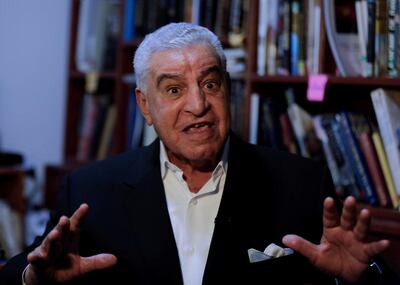Egypt has announced the discovery of an ancient city buried beneath the sand near Luxor’s Valley of the Kings.
The city, the largest to be discovered in the country, is more than 3,000 years old. It was built during the reign of Amenhotep III, the ninth pharaoh of the 18th Dynasty.
The royal cartouche of Amenhotep III was found on a large number of tools within the walls of the unearthed city, which are remarkably well preserved.
Through the cartouche, an Egyptian mission led by prominent archaeologist Zahi Hawass team was able to accurately date the city.
The team was reportedly digging for the mortuary temple of Tutankhamun near Luxor when they stumbled on mudbrick structures extending in all directions.
"We began our work searching for the mortuary temple of Tutankhamun because the temples of Horemheb and Ay were found in this area," Dr Hawass said.
In the city's buildings, some of which are three metres tall, were tools, jewellery, scarabs and pottery.
Prominent Egyptologists are already praising the importance of the find, with some likening it to the discovery of Pompeii, another ancient city that contained a large number of intact artefacts.
“The discovery of this lost city is the second most important archaeological discovery since the tomb of Tutankhamun," said Dr Betsy Brian, professor of Egyptology at Johns Hopkins University in Baltimore.
"The discovery of the lost city will not only give us a rare glimpse into the life of the Ancient Egyptians at the time when the Empire was at its wealthiest, but will help us to shed light on one of history's greatest mysteries: why did Akhenaten and Nefertiti decide to move to Amarna?"
The mission has been on-site for the past seven months and has excavated large portions of the city.
Its borders extend all the way to the nearby Deir El Medina, an ancient Egyptian village that was home to the artisans who worked on the tombs in the Valley of the Kings during the 18th to 20th dynasties.
Dr Hawass said he was proud of the Egyptian mission’s efforts.
“Many foreign missions searched for this city and never found it,” he said.
The city was the largest administrative and industrial 18th-Dynasty settlement on the west bank of Luxor, Dr Hawass said.
It is remarkably close to some of the most prominent ancient Egyptian monuments in Luxor, so it is puzzling that it had not been unearthed sooner.
The city is between Ramesses III’s temple in Medinet Habu and Amenhotep III’s temple at Memnon, two of the most popular ancient Egyptian heritage sites in the area.
Remnants of a bakery and a food preparation area, complete with ovens and storage pottery, were found in the city.
Also unearthed were a number of kilns believed to have been used for making faience and other decorative items.
“The archaeological layers have lain untouched for thousands of years, left by the ancient residents as if it were yesterday,” Dr Hawass said.








